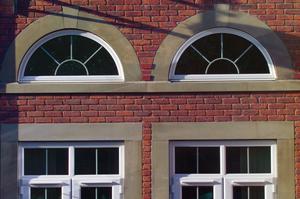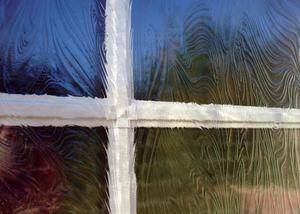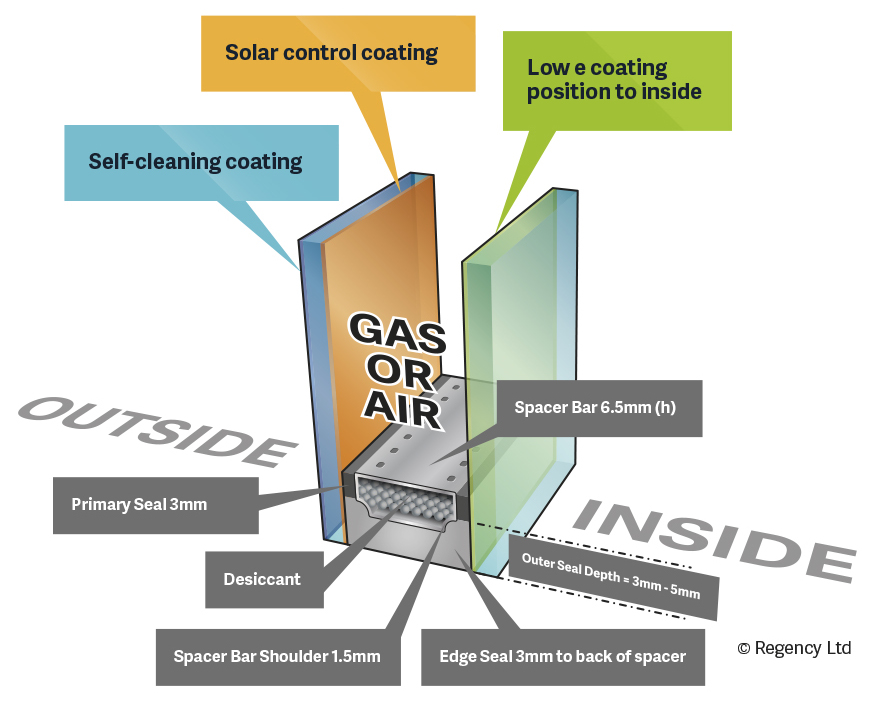Sealed Units
Creating hermetically sealed units
A sealed unit is made up of multiple panes of glass separated by air/gas cavities and sealed all around the edge to create what is known as hermetically (airtight) sealed units. There are 3 ways heat is lost through a sealed unit:
1. Conduction
Heat is transferred across the physical makeup of the sealed unit – glass, air, spacer bar, sealant, etc.
2. Convection
The heat is carried across the cavity by the action of convection via the rotating air within the unit cavity.
3. Radiation
Heat radiates through the glass in various forms of light/heat transmission.
The optimum cavity is 16mm, with 20mm being no better and in some cases worse. A 16mm cavity offers equilibrium between the conduction across the unit and the loss of heat by the convection currents within the sealed unit. The larger the gap, the more heat loss through convection; the lesser the gap, the more heat loss through conduction. The low e coating reflects radiated heat back into the room preventing total heat loss.
Heat loss through a sealed unit is greatest at the edge where it joins into the window frame. This is because the two panes of glass forming the insulating thermal cavity are joined by the spacer/sealant system, creating a ‘thermal bridge’. Heat is conducted across this bridge. The thermal insulation performance of sealed units can be improved by introducing additional insulating products. This includes ‘warm edge’ spacer systems, inert gas filling the cavities between the panes of glass, higher performance low e glass types and additional glass panes to give triple and quadruple glazing systems.
The Elements
Click on the image above to view full size
Associated Pages
Relevant Downloads





